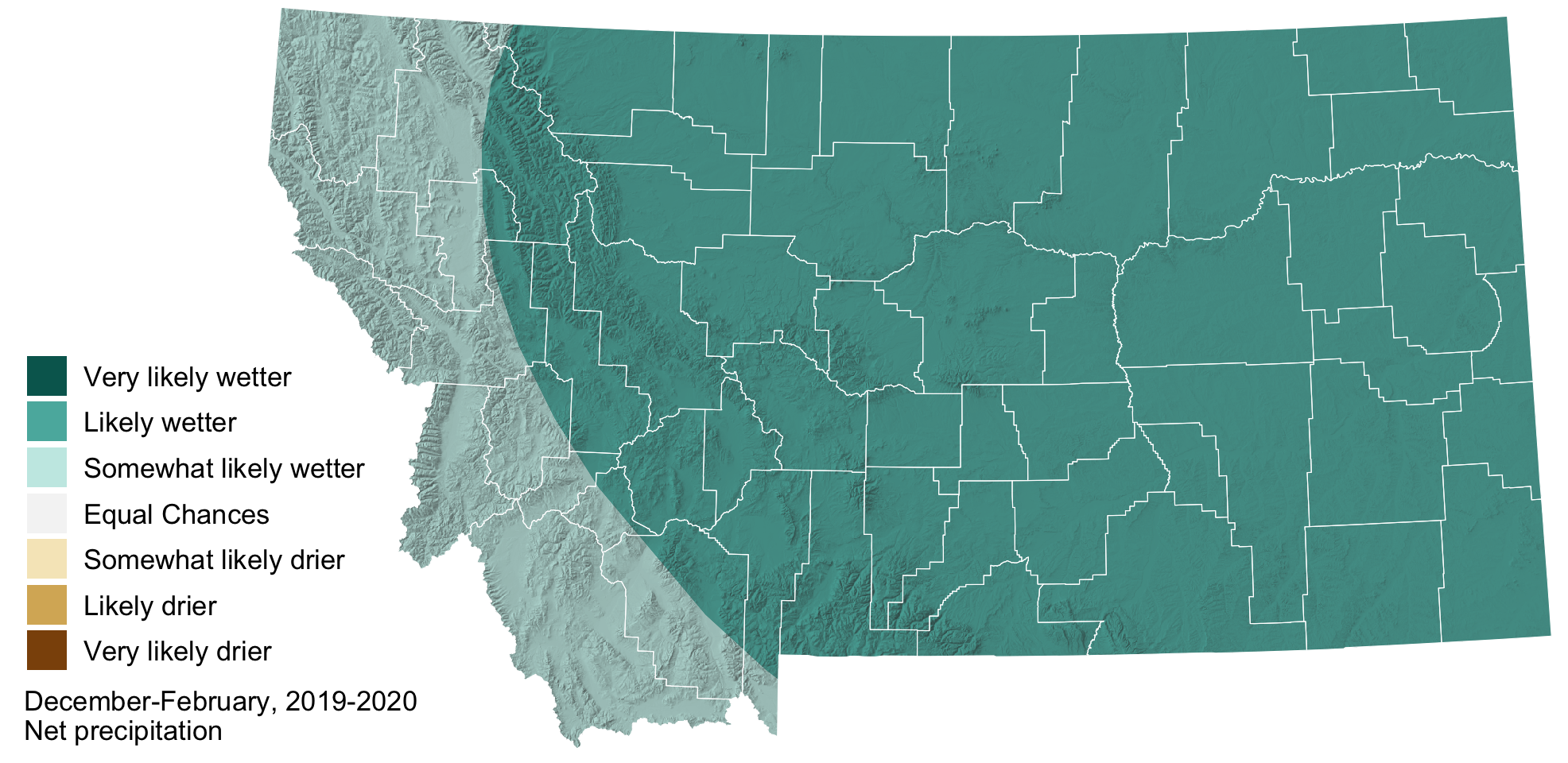Winter Forecast
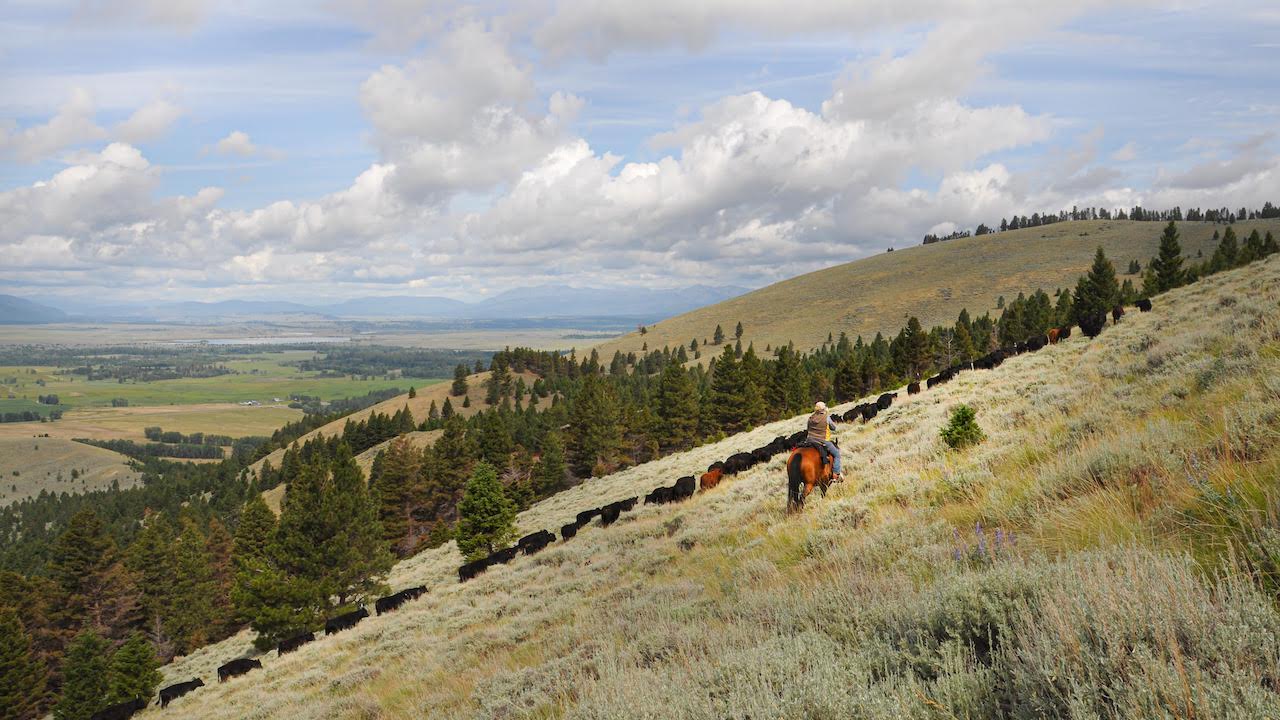
Driving cattle in the Blackfoot Valley, Montana. Conditions are likely to be warmer and wetter across much of Montana this winter. Photo: Ada Smith.
 El Niño Update
El Niño Update
The El Niño Southern Oscillation (ENSO) is a natural seasonal fluctuation in the sea surface temperature of the Pacific Ocean near the equator. In July, the Pacific officially moved out of El Niño conditions, and is currently in ENSO Neutral conditions (neither El Niño nor La Niña)—NOAA is forecasting that it will likely stay neutral through this coming winter. In Montana, ENSO Neutral conditions during the winter vary greatly, and climate forecasters rely on other data to create the seasonal outlooks. You can see that in the two graphs below, which show how Montana as a whole is affected by the ENSO climate patterns. The solid lines represent the average conditions in each of El Niño, La Niña, and ENSO Neutral conditions (see the Reference section for an explanation of these conditions). The dashed lines represent the range of recorded conditions during the 1981–2010 period on any given day. Notice that the range for ENSO Neutral conditions (orange dashed lines) is wider than for El Niño or La Niña—ENSO Neutral conditions can be warmer or cooler, and wetter or dryer, than normal conditions.
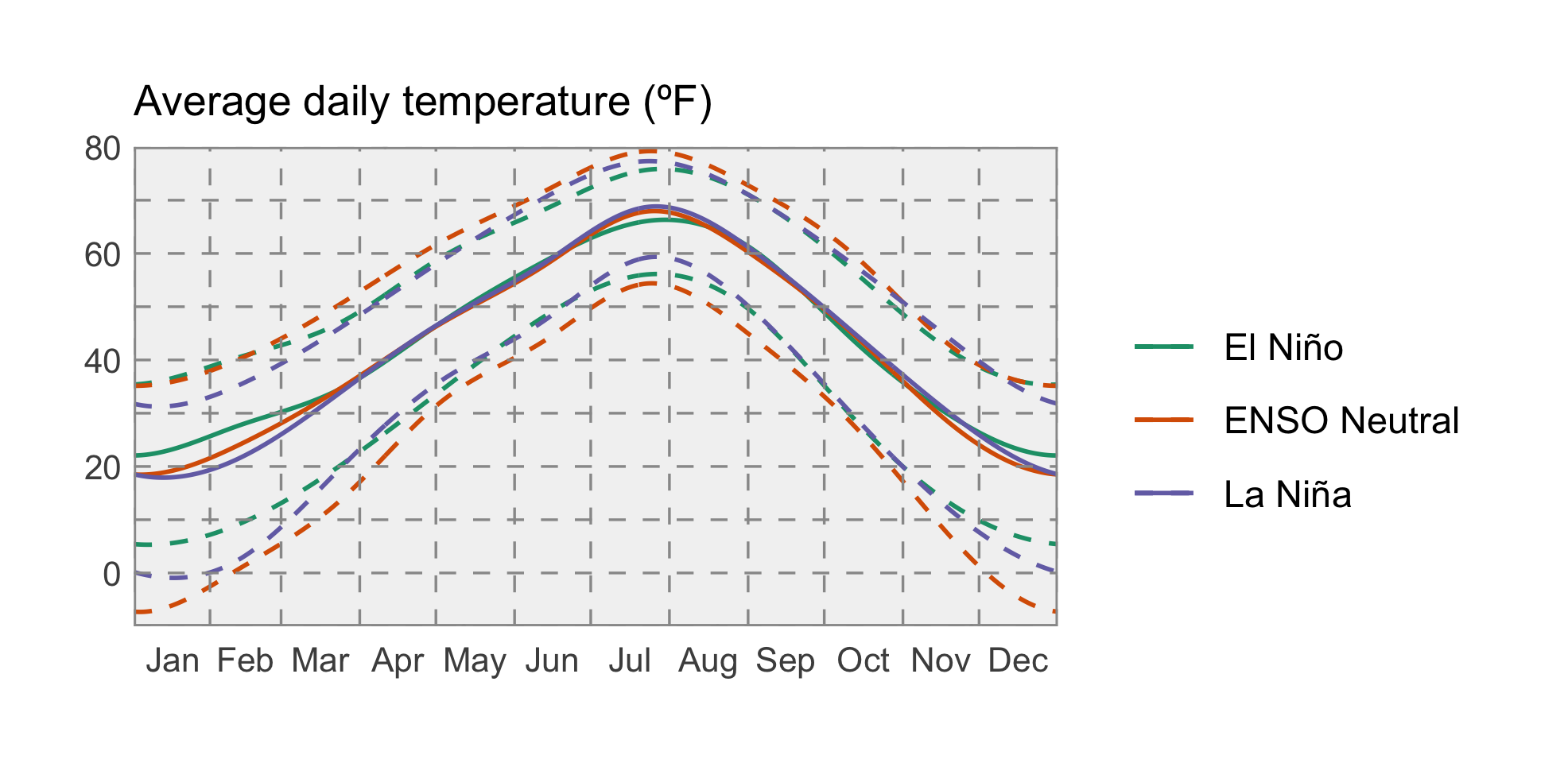
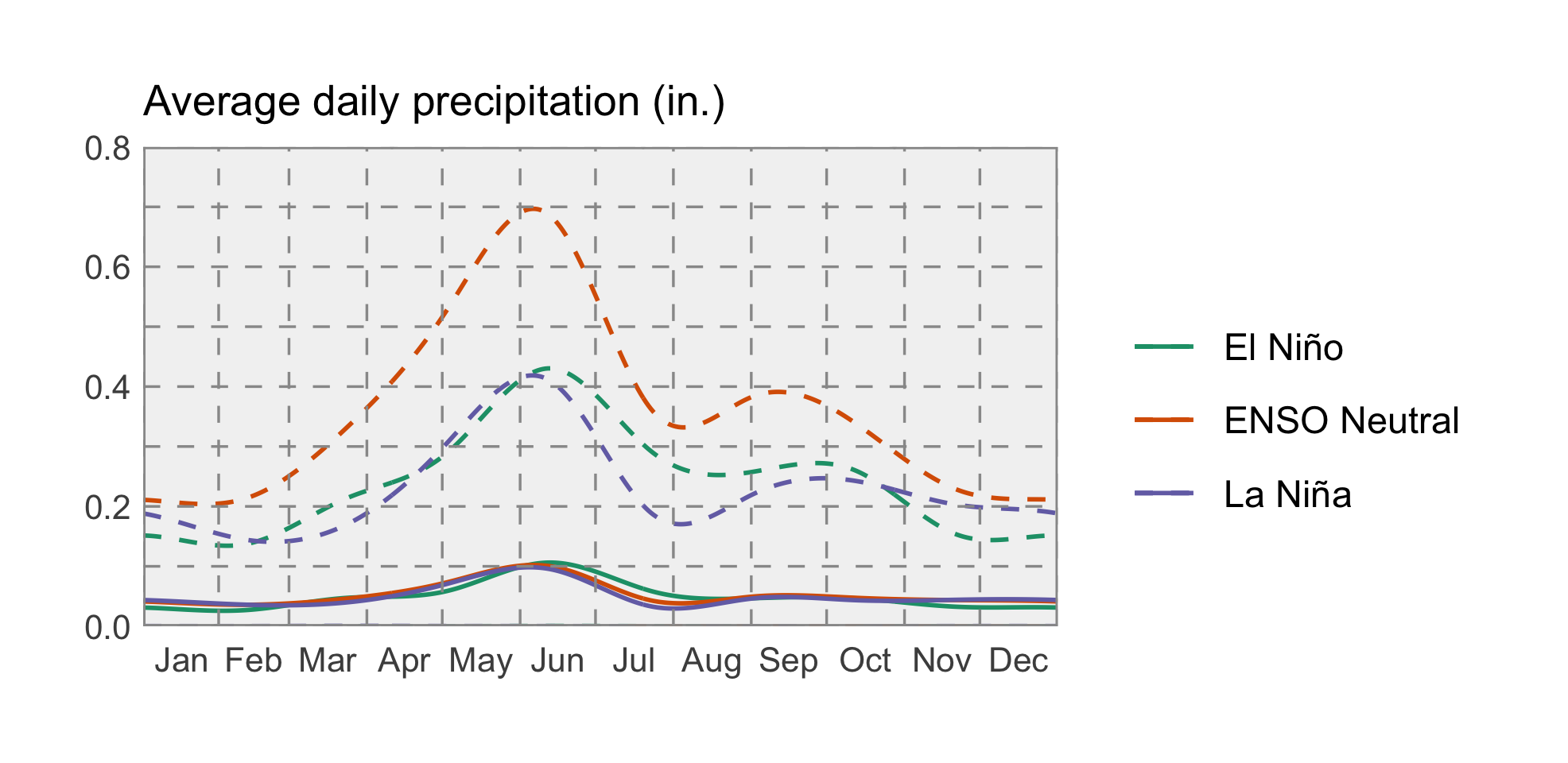
 Temperature
Temperature
Based on climatological data other than the ENSO status, NOAA’s Climate Prediction Center (CPC) is projecting that temperatures are somewhat likely to be warmer than normal across much of Montana this winter (December – February). This is a fairly weak prediction, however; there is still a chance that temperatures could be cooler than normal in some areas.
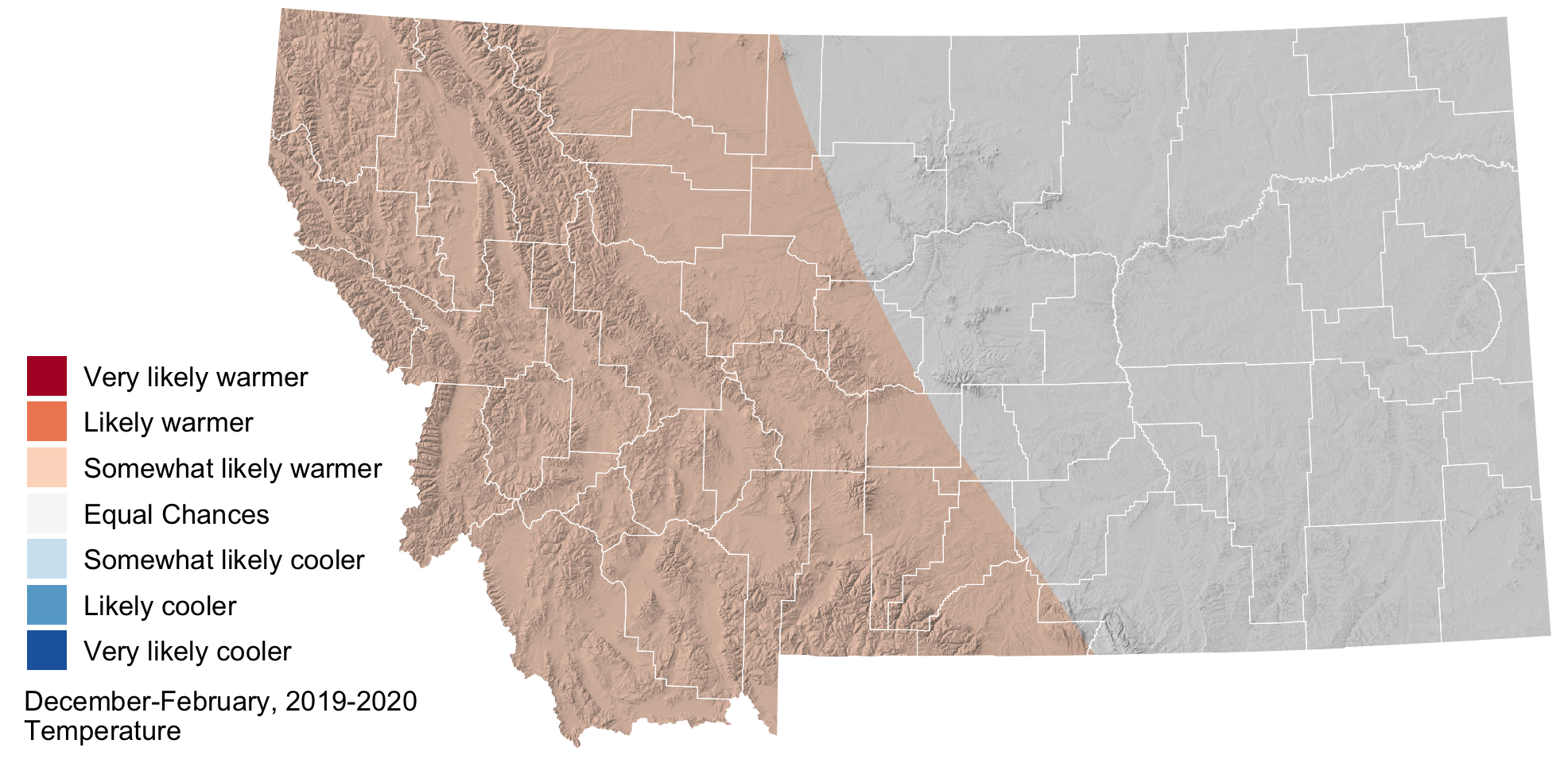
 Precipitation
Precipitation
The CPC is predicting that seasonal precipitation across Montana east of the Continental Divide is likely to be wetter this winter. Keep in mind that while the CPC is projecting wetter conditions, this map doesn’t reflect how much wetter is it likely to be, or the intensity of precipitation events. Should the precipitation fall as rain, or snow followed by a melting event, flooding is a possibility given the current high soil moisture across the region.
